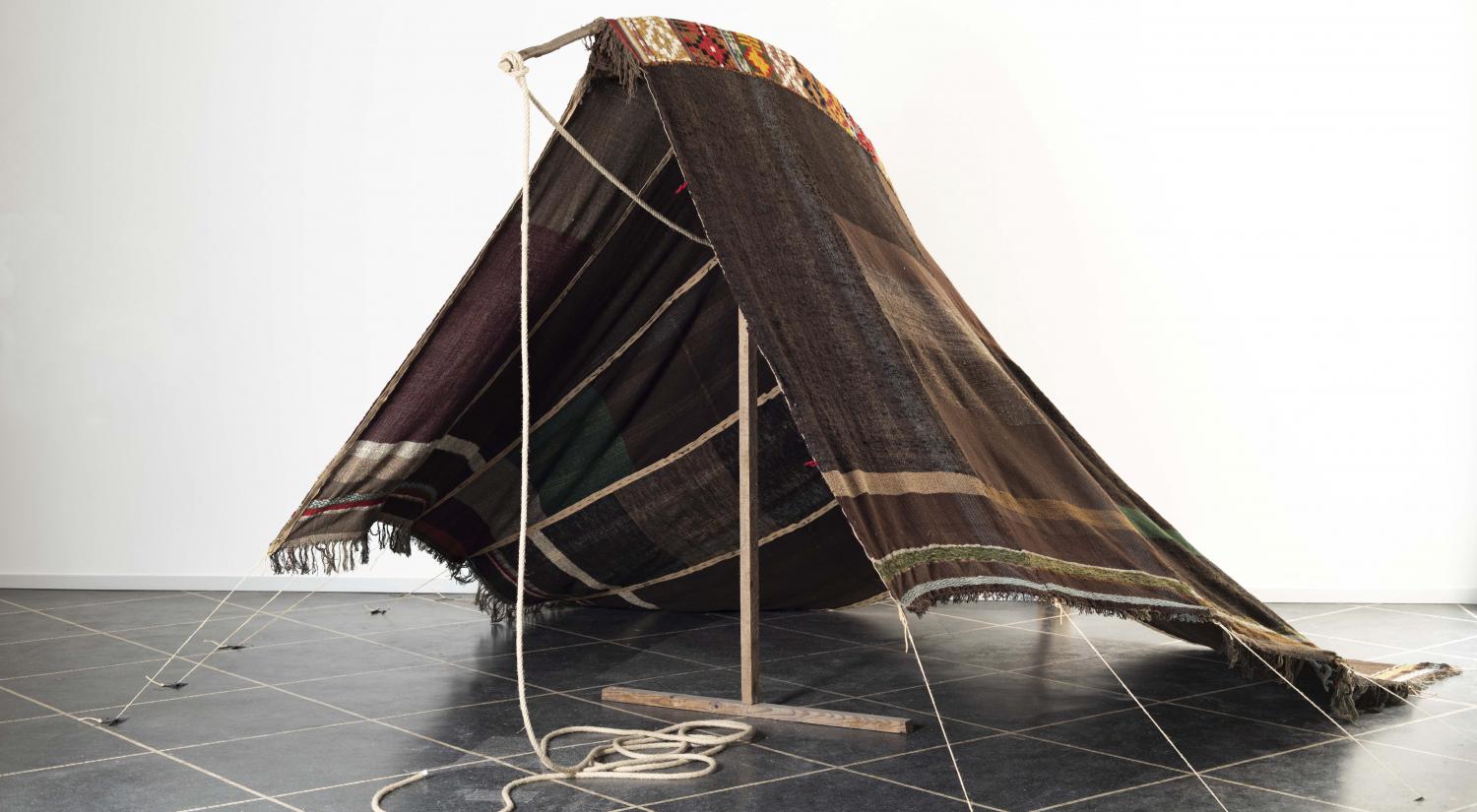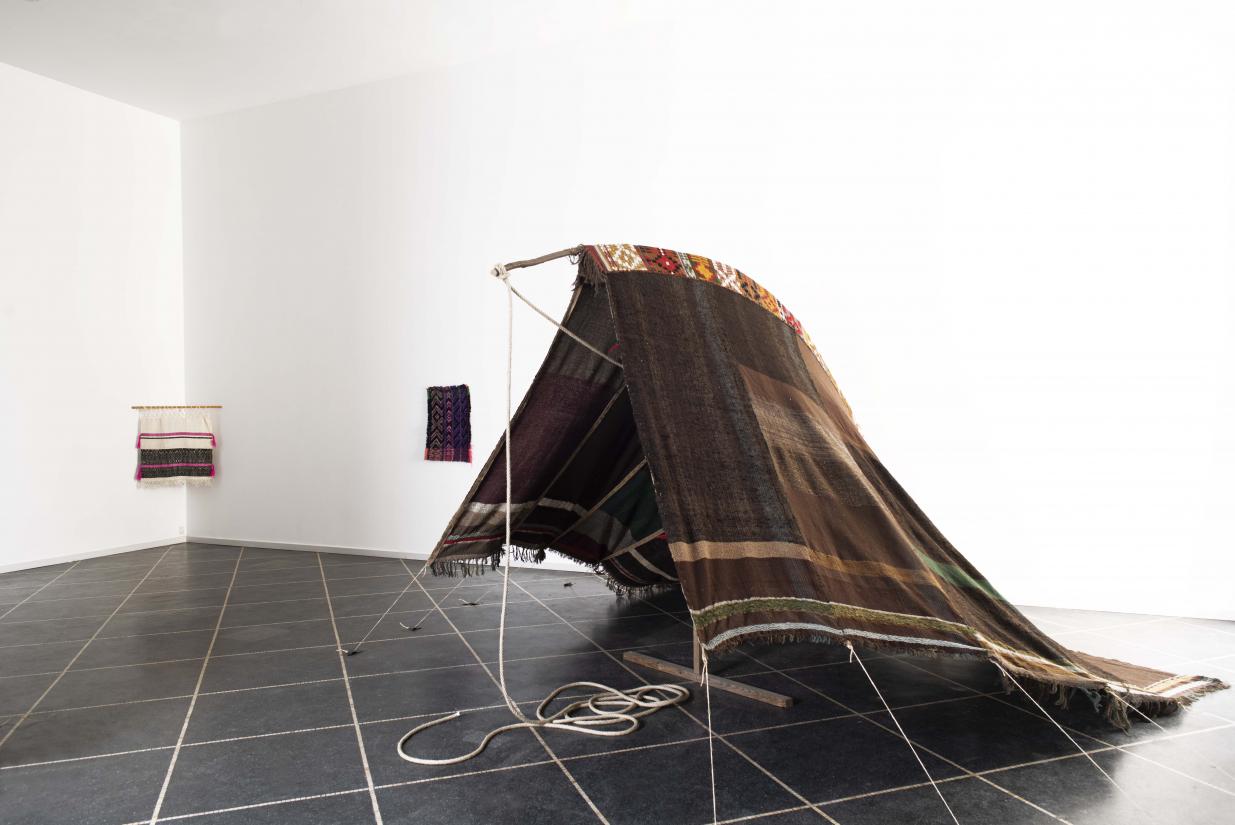Douar – Det sorte telt is an installation made of woven textile, rope, cord, wood and tree branches. A key source of inspiration for Braase was the aesthetic expression and nomadic culture of the Middle East, which had held her fascination since childhood. She found her window to the Middle East through books and countless visits to ethnographic museums. Despite her profound interest in the Middle East, Braase never actually visited the region. Thus, Douar – Det sorte telt is a dream vision, a fantasy of nomadic living as seen from Braase’s Paris studio.
Materiality
Braase took an explorative approach to art. Her practice was guided by intuition and often involved materials that are not normally associated with art, including everyday items, as when she wove a pair of sandals into her piece Menilmontant. In addition to these elements, Braase used homespun yarn on a loom she had built herself.
Revival
Braase was, and is, a well-known and respected artist, but like other female artists of her time, she never achieved widespread acknowledgement. In recent years, her works have been re-emerging and taking on renewed currency in a number of exhibitions, including at Sorø Kunstmuseum (Sorø Art Museum), Esbjerg Art Museum and Kastrupgaardsamlingen (the Kastrupgaard Collection). Currently, SMK, the National Gallery of Denmark, is showing her exhibition Textile, graphics, sandal, featuring some of the museum’s many new acquisitions by Braase.
Relationship to the collection
Braase’s installation is of unsurpassed technical and artistic quality. It is particularly relevant to Horsens Art Museum’s collection due to its substantial connections to several younger artists represented in the collection, including Emil Westman Hertz and Martin Erik Andersen. Douar – Det sorte telt also relates to two of the museum’s large woven works of art by Grete Balle. Both artists took an experimental approach to weaving but had very different expressions.
About Ragna Braase
Ragna Braase (1929–2013) worked at the intersection of art, architecture, craft and design. She trained at École des Beaux-Arts (School of Fine Arts) in Paris (1952–53) and at the Royal Danish Academy – Architecture, Design, Conservation in Copenhagen (1954–57). In 1968 she moved to the French village of Marcoussis together with her husband, artist Ib Braase, and their two children. Initially a painter, she later transitioned into graphic arts and weaving.




